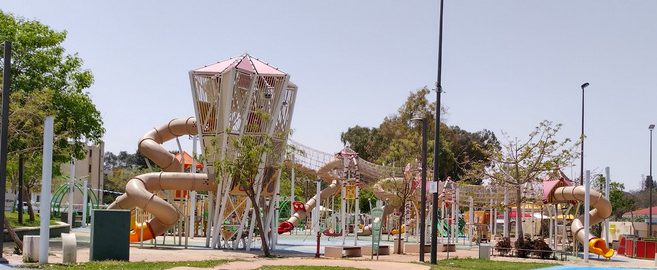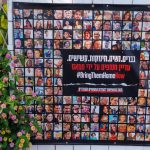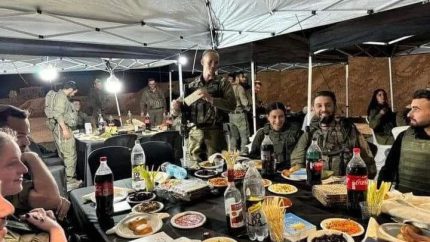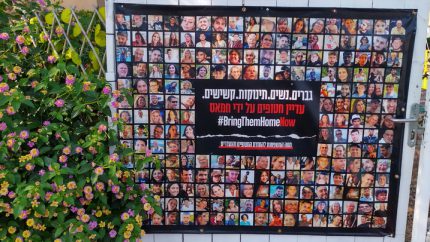It is the second day of Passover. Day 200 of the Gaza War. I traveled to Sderot to get a feel for what the people and town endured for the last six months.
I used to live in Sderot. I was only there for two years, and that was enough time for me to decide I did not like it there. It was not because of the bombs, themselves. But, come to think of it, it was because of the effect of the bombs. Everybody was stressed out. Each person expressed his stress in his own way, and it just was not fun to be there.
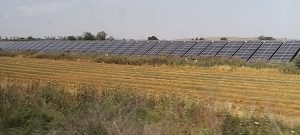
Maybe I should back up, and explain the bombs. Whenever you hear someone talk about Sderot, they say something about the “bombs” or “kassams.” Kassams are an integral part of Sderot’s history.
You see, Sderot is right next to Gaza. Gazans fired rockets as early as 2001 during the second Intifada. However, since 2005, as soon as all Jews were removed from Gaza , the Gazans got right to work on terrorizing their neighbors. They were able to make and launch unguided missiles – known as kassam rockets – very cheaply.
Kassams
Kassams have no guidance system, which means the Gazans didn’t aim the kassams at specific targets. They would aim their weapons in the general direction of where the Gazans believed they could do the most damage – at civilian populations. The nearest, and most vulnerable civilian population was in Sderot.
When the rockets came with frequency, the Israelis set up a city-wide alarm system, known as “Tzeva Adom (Code Red).” and began building safe rooms for every house. By the time I arrived in the middle of 2008, there were Tzeva Adom alarm systems all over the Gaza envelope, at least.

When I started living in Sderot, there was an average of at least one bomb a day. Tourists and politicians who came to Sderot were given a kassam tour, in which they would visit places that had been bombed, and they would meet people who had survived kassams landing on their houses. Just about everybody had a kassam story.
By 2008, after three years of random bombing, the psychological and emotional effect on the citizens of Sderot was immense. Some middle-aged and elderly people have been debilitated by fear. Many are unable to leave their homes. For them, food was and still is delivered. There was also at least one place in town where emotionally affected adults could occupy themselves with arts and crafts, and actually sell their creations.
Even the animals had been affected. I once met a man who had two dogs. The dogs were too shy to connect with me. Their owner said the dogs were depressed. A third dog had recently died of depression. I don’t know if the city has special facilities for the treatment of animals. Before 2008, Sderot had an active stables, with many horses. By 2008, when I lived in Sderot, all the horses had been removed from the stables, and were staying in a safer location.
Children are a primary concern in Sderot
Many children had sleep disorders. For many children in Sderot, their physical and emotional development had been disrupted. The city of Sderot has taken extra measures in trying to provide a happy childhood for the children of Sderot. Not only are there quiet parks and children’s parks interspersed throughout Sderot, the city, just like all communities throughout Israel, sponsors special events and entertainment for children. In addition, the state of Israel plus a few charitable organizations provide special services and programs specifically for the children of Sderot to help them overcome emotional difficulties.
A Chance Meeting
When I left for Sderot this morning, my plans were to wander around the town in the area where I had once lived. When I got to Sderot, I was immediately lost. The city had grown and changed so much. It took me a good hour just to find the general region of my apartment. While I walked along a main road, I saw that the town was preparing something special for the children.

Walking further along, two women with several children were walking in the opposite direction when the older woman called out to me, “Hello, we know you.” The younger woman looked at me and said, “Jerry? The last time I saw you, I was in 7th grade.” The four children were hers. And yes, I had been her substitute English teacher a few days when she was in middle school.
The older woman was her mother, who had been very instrumental in getting me to Sderot in 2008. She and her husband, both Americans, came to Sderot years before the troubles began, to build their own yeshiva. Today, their yeshiva in Sderot is one of the largest Hesder yeshivas in all of Israel. And the Fendel family has become a fixture in the history and growth of the city of Sderot. I believe they will also be key figures in the re-building of their city.
I tagged along with the Fendels to see the exhibits that the city had prepared. In the main exhibit, a guide recounted the history of the city, beginning in the early 1950’s with a few settlers from Kurdistan. They were soon joined by Jews from North Africa – primarily Morocco and Tunisia – and the city grew gradually.
The history of Sderot would be incomplete if it didn’t include the influence of the kassam rockets. The guide, herself, mentioned that she had been injured by a kassam in 2005, and that she had lost a very close friend in the incident.
My past neighborhood was a war zone on October 7.
Afterward, on my own, I wandered over to where the police station once stood before it was destroyed on October 7. The city plans to build a memorial there. You see, the police station had been the scene of one of the bloodiest battles on October 7. Palestinian terrorists attempted to take over the police station, while the city’s police men and women fought back. Some private citizens who were unarmed, tried to help the police. In the end, many Israelis and Palestinians were killed in this battle, and the building was demolished.
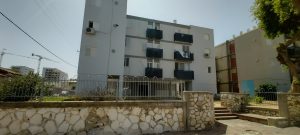
A five minute walk from the police station, I saw the building in which I lived. Improvements had been made. There was no sign of a battle having taken place there.
In all the battles of that day, about seventy residents of Sderot lost their lives. The Gazans continued to launch kassams at Sderot. Even though Sderot is protected by the Iron Dome Defense System, it was deemed unsafe to stay there. The town was evacuated with only about 10% of the population remaining. Five and six months later, people returned to their homes, some very hesitantly.
The World Watches Sderot
The thing is this. Gazans have been launching bombs at Sderot for more than twenty years. The people of Sderot have never launched rockets at Gaza. Palestinians in Gaza have never protested when their government has attacked Sderot. “Pro Palestinians” worldwide have never protested when Hamas has attacked Sderot, knowing that the attack would provoke a reaction by Israel’s army. “Pro Palestinians” worldwide have never protested when Hamas has used Palestinian children as shields to protect the fighters.
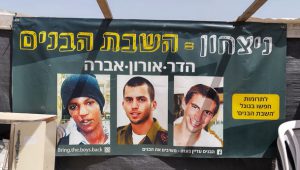
This is how I know Israel will not lose this war. Israelis do everything to protect their children. Hamas builds tunnels under children’s rooms to protect its fighters. “Pro Palestinian” supporters apparently are okay with this. With all the attempts by Palestinian to get Israelis out of Sderot, the city has grown. And it keeps growing.
Letter To Alexandria
I composed a letter in my head to Alexandria while I was walking along a busy highway – lost, of course – somewhere between Afula and Pardes Hannah. The ordeal of getting lost in the Israeli bus system was getting to my head. It all vanished when I met a soldier who was proud to show me pictures of a Passover Seder.
Passover: A Hope For Freedom
I could not, with complete honesty and compassion, wish my friends and family a happy holiday this year. Not while Israel is at war, and so many soldiers are away from their families. Not while more than a hundred of our tribe are being held hostage
Volunteering – Of Hope And Love
I have been doing volunteer work at Meir Panim in Or Akiva. It is a a non-profit organization that aids low-income / no-income families. The number of clientele picked up dramatically when the war started. There are, today, thousands of refugees who left their homes in the northern part of Israel.
Getting Around
I didn’t sleep much last night. I waited for a drone and missile attack that didn’t happen in Pardes Hannah. To begin my volunteerhood, I had to go to Or Akiva. So that was the first adventure. I had to learn which was the right bus to get on, and I had to learn how to use the Rav Kav card to pay. With help from good people all around, I got to the destination.
